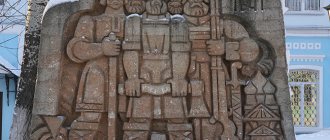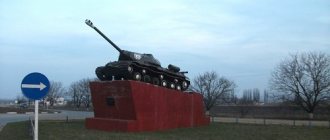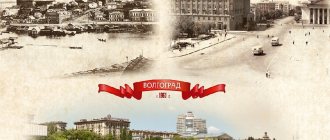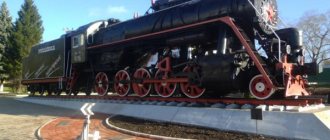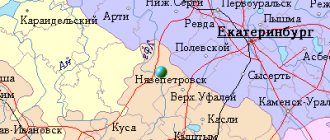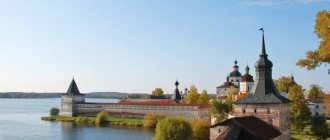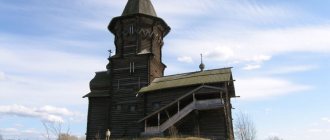- Reports and messages
- Miscellaneous
- City of Saransk
The city of Saransk is the capital of the Republic of Mordovia, which is part of the Volga Federal District.
1641 is considered the year of the founding of the city, which at that time was a fortress. The city has gone through stages of its development from a defensive fortress, a provincial district to a modern cultural and industrial center. Saransk is located 642 kilometers from Moscow. It is divided into two parts by the Insar River. The population of the city at the beginning of 2021 was about 320 thousand people, most of whom are Russians.
Saransk consists of three administrative districts: Leninsky, Proletarsky and Oktyabrsky. The Leninsky district is central and more cultural. It is in this area that there are a large number of schools, kindergartens, medical institutions, cinemas and theaters, stadiums and libraries. In the Leninsky district there are about twenty-five industrial productions and enterprises that provide jobs for the majority of residents. The production of electrical engineering and lighting engineering is the most important in Saransk. Mechanical engineering and the chemical industry are also well developed here. Saransk is now a city with modern and impressive buildings. A large number of them have appeared since the decision was made to host the 2021 World Cup football matches in the city.
The transport network of Saransk consists of trolleybuses, buses and minibuses. Among the attractions in the city of Saransk, one can highlight Cathedral Square, in the center of which is the huge luxurious Cathedral of Admiral F. Ushakov. There are no historical monuments in this city. But there are many different sculptures by the world-famous sculptor Stepan Erzya, who was born in Saransk.
Any tourist from young to old, visiting the city of Saransk, will be left with good impressions of this ancient city.
Option No. 2
What is the city of Saransk famous for? What is his history of command and prosperity? The city of Saransk is the capital of Mordovia, and Saransk is also an administrative city. This city is thriving every day! The industry in the city is very well developed, it is in high demand and popularity. Saransk is a cultural center, famous for its history and, of course, culture. The city can also boast of its economic component, as well as the achievement of great results in scientific terms. The city in its plan is very high quality and beautifully executed. Beautiful landscape design, nature and cleanliness of the city. All these components give an overall picture of a wonderful city. The city is very cozy, they say that any visitor can quickly get used to it and find their cozy nest. I can't help but note the cleanliness of the city. I have been to different cities, but apparently in Saransk people are more cultured, and the cleaners are more hardworking. Russian culture in the city of Saransk is combined with other traditional cultures.
The city was founded in one thousand sixty forty-one. And even then, at first it was very difficult to call it a city, because it was only a fortress that served for the defensive actions of the military in those years. Previously, this place was called “Saransky Ostrozhek”. Saransk, or, as they said in those years, “Sara,” is translated as a swamp, or wetland. This is how the name of the city of Saransk was born! The population of the fortress consisted of such people as: Cossacks, archers and other representatives of military affairs. But there were many inhabitants, or rather their nations, from Russians to Mokshas. This structure had a shape that resembled a square. And as you know, large towers were always placed in the corners in order to have a very broad outlook.
The structure was unique in that they not only had four towers on the edges, but they also decided to make two towers in the middle on one side and the other, and they also decided to place one of the largest towers in the center of their, so to speak, defensive base. Life and war reigned inside the building. There were all the conditions created for the life of the residents, food, clothing, and so on. There were also items for military operations or defense. Officially, the city of Saransk became a city only in one thousand seven hundred and eighty. But, oddly enough, it was already called a city eight years after the founding of this fortress.
Essays on history
History of the city of Saransk
Park of Culture and Leisure named after.
A. S. Pushkin in 1972-1976. Saransk is one of the oldest cities in the Middle Volga region. It arose in 1641 as a military fortress on the south-eastern outpost of the Moscow state, founded at the intersection of large horse-drawn roads that connected Astrakhan with Moscow, Crimea with Kazan.
Mordovian scientist I.K. Inzhevatov, in his works on the toponymy of Mordovia, talks about the origin of the name Saransk. If you look closely at the map of Mordovia, you will involuntarily notice that it is replete with names with the same base - sar
: Saransk, Insar, Sanaksara, Sarga, Insarovka, Bolshaya Sarka, Malaya Sarka, etc. This word is also found on maps of the regions neighboring Mordovia.
In the censuses of Mordovian settlements conducted in the 17th and 18th centuries, the words sara, sanaksara, sarley, sarguzha, sarpomra are also found.
Word Sarah
in Finnish, Karelian, Estonian and other Finno-Ugric languages it was and is now used to designate swampy, soggy places.
Saransk really arose on the shore, surrounded by large sars.
The Saranka River, called Sarley in the 17th century, formed a huge swampy area near the city. Further, behind the line of the current railway, another sara began, very extensive, which is why it received the name Insar (in other words, big). The Insar River created a wide swampy floodplain. Initially the city was called Saranesk.
The Saransk fortress had an almost square shape. The Saranka River flowed through the territory of the fortress. The fortress was surrounded on all sides by an earthen rampart with corner wooden towers and a high palisade. On the outside of the rampart there were deep ditches. On the inside there were also wooden walls with devices for defense.
The first settlers of the Saransk fortress were Cossacks and archers, who carried out guard duty here. Until the 18th century, the city was divided into settlements, which were initially fortified.
Since 1651, Saransk has been a district town. When the provinces were formed in 1708, it was classified as Azov, then Kazan, Simbirsk, and from 1801 to Penza.
Over more than three centuries of history, the city has witnessed many events. In 1670, the Saransk fortress was besieged and taken by the troops of Stepan Razin, after which Saransk became one of the strongholds of the Razins. In 1774, E. I. Pugachev entered the city with his army, and was greeted by the population with great honors.
In the 18th century, the city gradually turned into a commercial and industrial center. Grain, hemp, leather, meat, honey - these are the main sales items. Small handicraft tanneries, oil presses, and lard-making enterprises are developing in the city, the products of which were in great demand on the market. According to static data published in 1849, in Saransk there were 15 leather factories, 3 wax factories, lard factories, glue factories, and 3 candle factories with employees ranging from 2 to 10 people. The population was 14.2 thousand people.
In the 19th century, devastating fires (1817, 1825 and 1869) destroyed almost the entire city. However, each time it was rebuilt anew.
At the end of the 19th century, the Moscow-Kazan Railway line passed through Saransk. The construction of the road revived the economic and political life of the region. The city of Saransk also began to grow, becoming a fairly large shopping center in the Middle Volga region. Agricultural products were exported from here to many cities and provinces of Russia, and goods from St. Petersburg, Moscow, Nizhny Novgorod, Kazan, Penza, and Kharkov arrived here.
However, economic recovery did not change the appearance of the city. Saransk continued to remain provincial, mostly made of wood and completely undeveloped. The tsarist government cared little about the improvement of county towns, allocating them meager funds. In 1900, the famous dictionary of Brockhaus and Efron was published, this is what it says about Saransk:
“A district town in the Penza province... 13,743 inhabitants... Several small brick factories, 1 soap factory, 2 lard factories, 3 tanneries, an oil mill, which in total employ only 352 workers... Women's gymnasium, city four-year school, 3 parish, 1 parish, 1 private school, 2 almshouses, 1 zemstvo hospital with 40 beds... 19 churches and chapels.”
Saransk changed little in subsequent years. The city was destined to experience a rebirth only after the victory of the Great October Socialist Revolution.
With the advent of the railway in Saransk, a new detachment of workers began to form - a detachment of railway workers who established regular contacts with the largest revolutionary centers of Russia - Moscow, Nizhny Novgorod, Kazan, Penza.
In 1903, the first social democratic organization in the history of the Mordovian region was created in Saransk.
2 printing houses are opening. The first printed newspaper “Muzhik” is published. Its editor was V.V. Bazhanov. She was progressive in nature. For boldly castigating the unrest, tyranny and arbitrariness of the “city fathers,” the newspaper was closed and the publisher was exiled. Soon the newspaper reappeared, but under the name “Saranskie Vesti”.
During the further development of revolutionary events in Saransk, the revolutionary soldier masses played a major role. In Saransk in 1917 there were about 28 thousand people, of which over 10 thousand were soldiers. Among the soldiers of the Saransk garrison were front-line soldiers, former workers of the revolutionary and industrial centers of Russia. They launched extensive work among workers and soldiers to explain the Leninist ideas of the Bolshevik Party. The Bolshevik committees of Penza and Nizhny Novgorod provided them with great assistance in this regard, sending here Bolshevik literature and issues of the newspaper Pravda. Representatives of these committees came to Saransk to provide direct assistance in organizing work among the population. Representatives of these committees came to Saransk to provide direct assistance in organizing work among the population.
The battles of the civil war and foreign intervention died down. At the cost of enormous sacrifices and losses, at the cost of the lives of their best sons and daughters, the peoples of the multinational Soviet country defended the gains of the Great October Revolution and began to restore the destroyed national economy.
In 1921, many industrial enterprises in Saransk did not work due to lack of fuel and raw materials, many were destroyed. There were more than 440 permitted and unfinished buildings in the city. From a small district town, such as Saransk at that time, there was also an outflow of population to the village. The restoration of the city's industry was completed only in 1928.
The restoration of the city's economy served as the basis for the development of public education, healthcare, and culture. By 1928, the population's literacy rate had risen to 63.1 percent. Two technical schools began to operate in the city: a pedagogical and an industrial one, two cinemas, a local history museum, a folk club, and a Mordovian Soviet Party school was opened. The network of medical institutions expanded, and the cadre of the Soviet intelligentsia grew.
With the formation in 1928 of the Mordovian Autonomous Region as part of the Middle Volga Region, and in 1930 as part of the Middle Volga Region of the Mordovian Autonomous Region, then transformed in 1934 into the Mordovian Autonomous Soviet Socialist Republic, Saransk became the capital city.
In the 30s, with the fraternal help of the Soviet peoples, the rapid and comprehensive development of the economy and culture of Saransk began.
In 1933, the first stage of the Saransk Central Thermal Power Plant named after E. Thalmann was launched, and the cotton factory produced its first products. A year later, the canning plant started operating, and two years later the hemp plant was operational.
The scale of industry, construction, and the massive labor enthusiasm of the working people made it possible to significantly increase the output of industrial products.
By 1940, there were 57 industrial enterprises and construction organizations in Saransk, compared to 18 in 1917. The volume of gross output of industrial enterprises increased 22 times compared to the pre-revolutionary period. Saransk began to improve.
In the 30s, the first asphalt sidewalks and the first buses appeared. The first three- and four-story residential buildings, a hotel, a central post office, and a new central library building were built. In 1940, construction of the House of Soviets building was completed, and a year later the new railway station came into operation.
During these years, the number of cultural and educational institutions and schools was rapidly growing in Saransk, and the network of medical institutions was expanding.
The beginning of the 30s was marked by the opening of the first higher educational institution - the Mordovian Pedagogical Institute, the highest communist agricultural school, the research institute of Mordovian culture, later reorganized into the Mordovian Research Institute of Language, Literature, History and Economics.
Such figures speak of the growth of the culture of the city’s workers. In 1940, there were already 15 schools and four technical schools in Saransk. About 10 thousand people studied in all educational institutions. In other words, almost every fourth resident of the city studied, since the population was 42 thousand people. By this time, there were 24 libraries, 13 clubs and red corners, 8 film installations, and 25 medical institutions in the city. The population had about 5 thousand radio points and radio receivers. About 500 specialists worked in educational institutions and medical institutions.
The theatrical art developed, and creative unions of writers and artists strengthened. Workers in culture, public education, and the creative intelligentsia actively participated in conducting broad political, educational and cultural work among the working people.
But the peaceful creative work of the Soviet people was disrupted. Nazi Germany attacked our Motherland. The Great Patriotic War began. The patriotic movement in Saransk took on a wide scope to create a fund for the defense of the Motherland, to raise funds for tank columns and air squadrons, and to collect warm clothes for soldiers and commanders of the Red Army. The working people of the city surrounded the wounded Soviet soldiers in Saransk hospitals with nationwide concern. They warmly and brotherly received and accommodated those evacuated from areas temporarily captured by the enemy, and organized assistance to the families of front-line soldiers. In the subsequent stages of the Great Patriotic War, when the valiant Soviet Armed Forces began to clear the Soviet land from fascist invaders, the workers of Saransk and all of Mordovia actively joined the broad patriotic movement to provide assistance to the workers of the liberated regions of Voronezh, Gomel, Ryazan, Smolensk and Tula regions, Donbass, to our Orthodox hero cities.
During the harsh years of the war, the 326th Infantry Division was formed in our city, which took part in the defeat of the Nazi hordes near Moscow, beat selected Nazi units in the area of Rzhev and Roslavl, Leningrad and Pskov, liberated Soviet Estonia, crushed the enemy in East Prussia, ended her journey in Germany on the Elbe. For the exploits, courage and heroism of the soldiers and commanders, the 326th Division repeatedly received thanks from the Supreme Commander-in-Chief and was awarded the Order of the Red Banner. More than eleven thousand of its valiant soldiers were awarded orders and medals of the Soviet Union during the Great Patriotic War.
During the war years, our glorious fellow countryman, a native of Saransk, Semyon Antonovich Polezhaev received the high title of Hero of the Soviet Union. He flew about 300 combat missions and dropped 350 tons of bombs on enemy communications.
Many died on the battlefields, fighting for the freedom and independence of our Motherland. At the very end of the war, the glorious pilot, a native of the village of Taneevka in the former Saransk region, Pyotr Ivanovich Orlov, died the death of the brave. In April, a hot battle broke out on the approaches to Berlin. P.I. Orlov, leading a group of aircraft, destroyed two fascist echelons with tanks and manpower. But on the way back he was surrounded by fascist fighters. Orlov was wounded. Bleeding, he sent his plane into a concentration of fascist troops and equipment. The day before the victory, on May 8, 1945, our fellow countryman, who repeated Gastello’s feat, was posthumously awarded the title of Hero of the Soviet Union.
The Hero of the Soviet Union, a native of the city of Saransk, Komsomol member Viktor Bobkov, who showed extraordinary ingenuity, courage and determination in crossing the Neman, did not return from the battlefields.
Hero of the Soviet Union Vasily Kornishin acted fearlessly behind enemy lines. Guard sergeant major, Hero of the Soviet Union Konstantin Karachkov, brave bomber pilot, Hero of the Soviet Union Vladimir Strelchenko, front-line cameraman Vladimir Sushchinsky, Komsomol member Igor Kosarev performed heroic deeds more than once. The hometown remembers its brave sons.
After the war, its residents, working selflessly, reached new heights in the development of industry, culture, and public education.
Popular message topics
- Jazz
In the first half of the 20th century, a new direction in music appeared - jazz. It mixed West African and Western European music. The complex rhythm indicates that the birthplace of jazz is Africa. - Lice
At all times, people, faced with various disasters, be they social, natural or man-made, have encountered another problem. Lice. Navigating the terrain solely thanks to the sense of smell represented by the antennae, - Prioksko-Terrasny Nature Reserve
The Prioksko-Terrasny Nature Reserve was founded on June 19, 1945. Since then, the reserve has turned into, albeit the smallest in area, but one of the cleanest reserves in Russia. It is also a research center
Population
According to statistics, by 2021 314,389 people will live in Saransk. The demographic situation here is considered relatively stable. Such a serious outflow of population as in other provincial towns is not observed here. But at the same time, the number of visitors is growing very slowly. For example, in 2021, 307,698 people were officially registered in the city.
We found out in what region Saransk is located these days. This is the Republic of Mordovia. However, oddly enough, the majority of the population in the city - almost 2/3 - are Russians. Also, a lot of Erzyans and Mokshans (branches of the Mordovian ethnic group) live here. Another fairly large group of the population is the Tatars. There are no interethnic conflicts observed in Saransk. The only thing is that there is a small Mordovian organization that considers Russians oppressors and even publishes its own newspaper.
Education, culture and economics
To date, Saransk has one university, three universities, a branch of the Humanities Academy, several colleges, technical schools and schools. Saransk residents do not remain aloof from cultural life. There are five theaters alone in the city. Also on the territory of Saransk there is a cultural center named after. Gerard Depardieu. Of course, there are cinemas, museums and libraries in the city.
